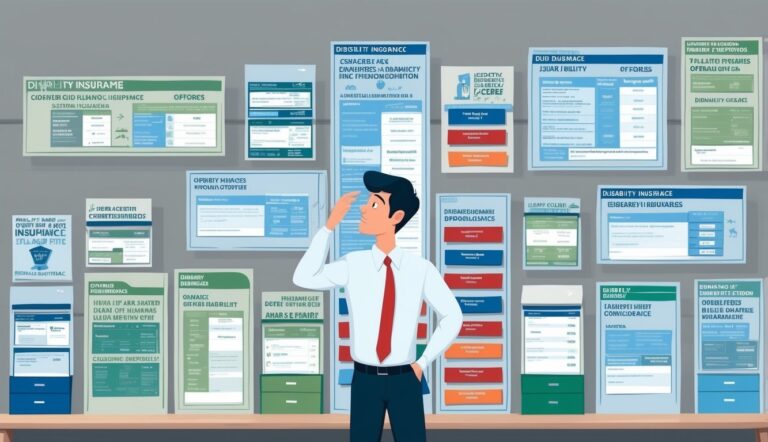Disability insurance provides crucial financial protection if you become unable to work due to illness or injury.
Many people overlook the importance of this coverage or make mistakes when selecting a policy.
Understanding common pitfalls can help you choose the right disability insurance for your needs.
Selecting appropriate disability coverage requires careful consideration of various factors, including policy terms, benefit amounts, and exclusions. By avoiding common mistakes, you can ensure you have adequate protection in place.
This article will explore seven key errors to steer clear of when choosing disability insurance, helping you make an informed decision to safeguard your financial future.
1) Underestimating Coverage Needs

Many people make the mistake of underestimating how much disability insurance coverage they actually need.
This can leave you financially vulnerable if you become unable to work due to an illness or injury.
When choosing a disability insurance policy, it’s crucial to consider your current income and expenses.
Think about your monthly bills, debt payments, and living costs.
Don’t forget to factor in future financial goals and obligations.
One in 8 workers will be disabled for five years or more during their lifetime.
The financial impact of a long-term disability can be devastating if you’re not adequately prepared.
Your employer-provided coverage may not be sufficient.
Group policies often have limitations and may only cover a portion of your income.
It’s important to review the terms and consider supplementing with an individual policy.
Remember that disability insurance is designed to replace your income if you can’t work.
You want to ensure that your coverage is enough to maintain your standard of living and meet your financial obligations.
Consider your career stage and future earning potential when determining coverage needs.
Young professionals often underestimate their long-term income potential and may choose inadequate coverage levels.
Take the time to carefully assess your financial situation and future goals.
This will help you select a disability insurance policy with appropriate coverage to protect your financial well-being in case of an unexpected disability.
2) Ignoring Policy Exclusions
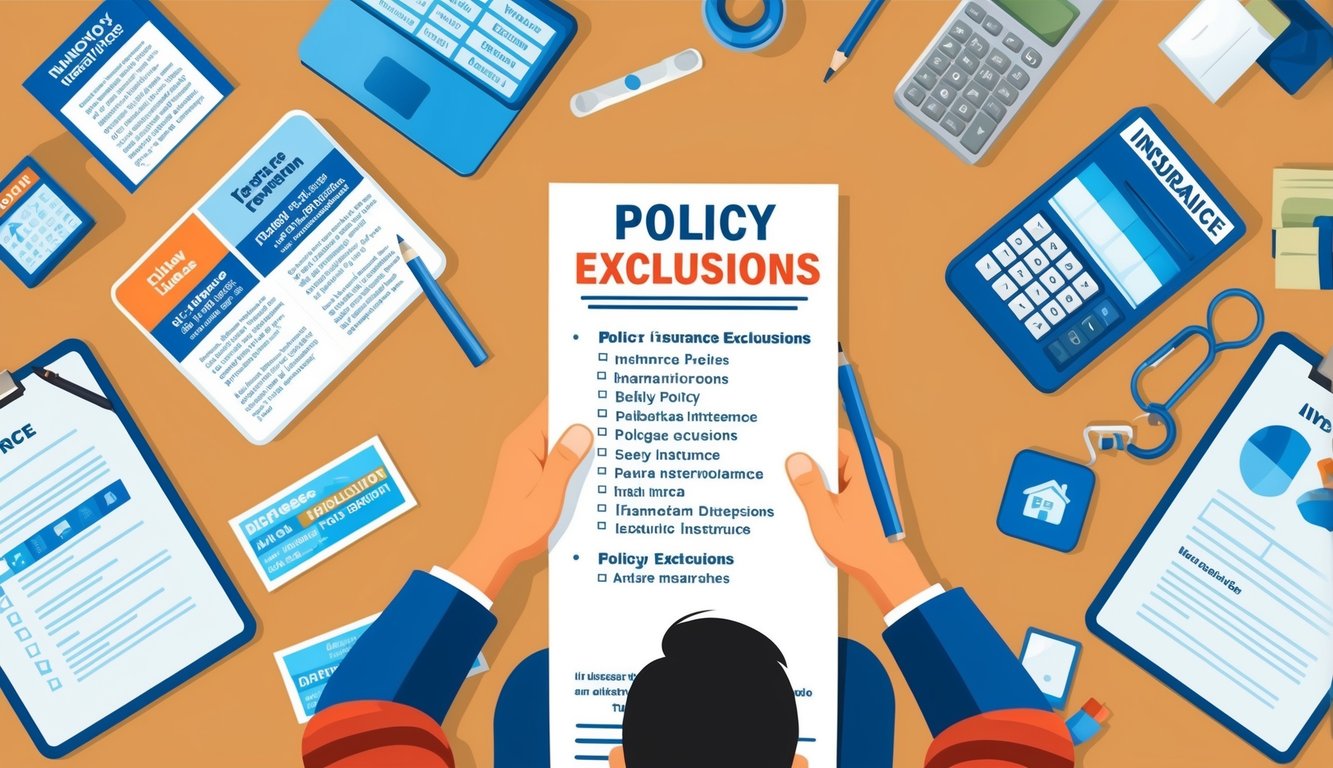
When selecting disability insurance, it’s crucial to pay close attention to policy exclusions.
These are specific conditions or circumstances under which the insurance company won’t provide coverage.
Many policies have common exclusions such as self-inflicted injuries, acts of war, or normal pregnancy.
Failing to review these exclusions can leave you vulnerable in certain situations.
Some policies may exclude coverage for pre-existing conditions.
This means if you have a known health issue, it might not be covered if it leads to disability.
Be aware of mental health and substance abuse limitations.
Many policies restrict coverage for these conditions, typically to one or two years.
You should also look out for uncommon exclusions.
For example, some policies may deny claims if you spend extended periods outside the U.S. or Canada.
Remember that exclusions can vary significantly between policies.
What’s covered by one insurer may be excluded by another.
Take the time to thoroughly read and understand all policy exclusions.
If you’re unsure about any terms, ask your insurance agent or broker for clarification.
By carefully reviewing exclusions, you can ensure your disability insurance provides the coverage you need and expect.
3) Choosing Only Employer-Provided Insurance
Many people make the mistake of relying solely on employer-sponsored disability insurance.
While this coverage is a good start, it often falls short of providing full financial protection.
Employer-provided disability insurance typically covers only 40-60% of your salary.
This may not be enough to maintain your lifestyle if you become disabled and unable to work.
Another issue is that benefits from employer-sponsored policies are often taxable.
This means you might receive even less than the stated coverage amount after taxes are deducted.
You should also be aware of coverage limitations.
Employer policies may have caps on monthly benefits or strict criteria for qualifying as disabled.
These restrictions could leave you underprotected in certain situations.
It’s important to review the terms of your employer-provided coverage carefully.
Look for any gaps or limitations that could affect you if you need to file a claim.
Consider supplementing your employer’s policy with an individual disability insurance plan.
This can help ensure you have comprehensive coverage tailored to your specific needs and profession.
Remember, if you leave your job, you’ll likely lose your employer-sponsored disability insurance.
Having your own policy provides continuous protection regardless of your employment status.
4) Not Considering Benefit Period Length
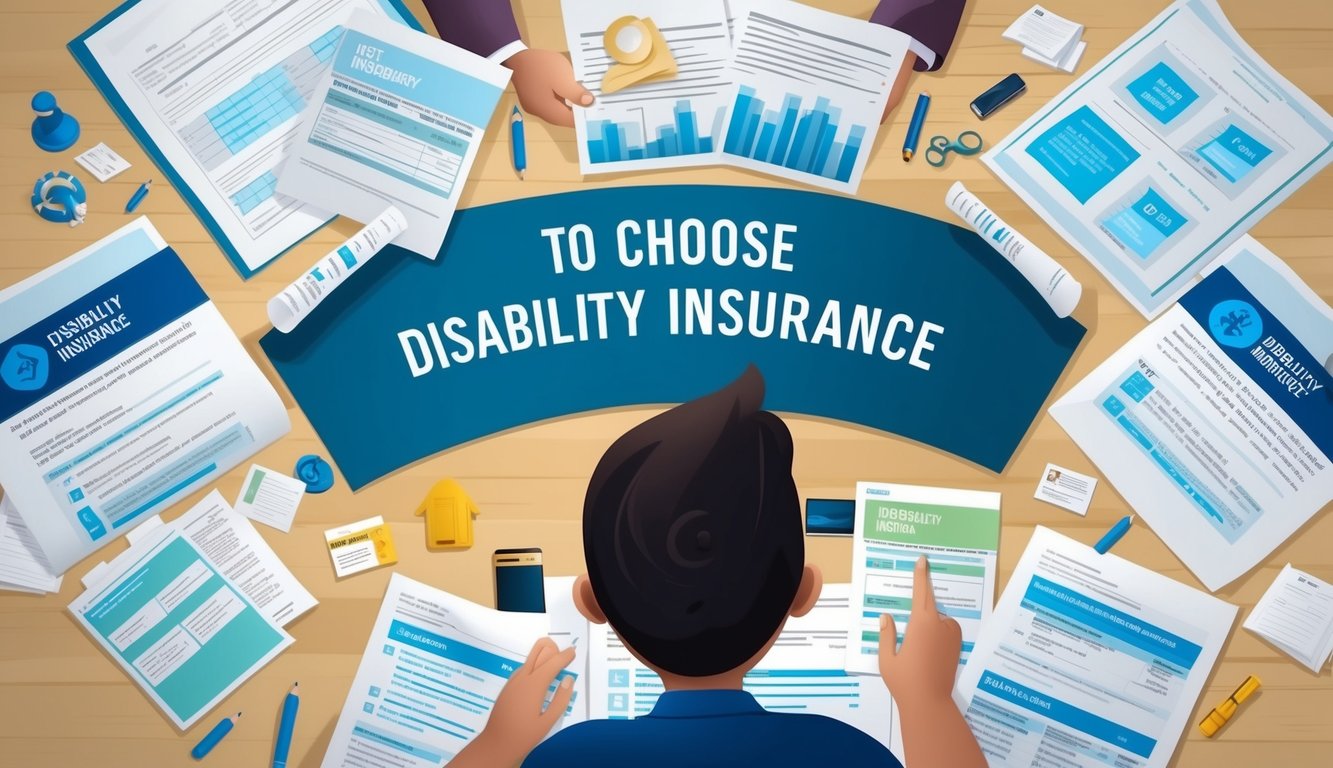
Choosing the right benefit period for your disability insurance is crucial.
The benefit period determines how long you’ll receive payments if you become disabled.
Short-term disability policies typically offer benefit periods of 30 to 180 days.
Some insurers may provide options for two to three years.
Long-term disability policies often have benefit periods lasting until retirement age.
This can provide financial security for an extended time if you’re unable to work.
When selecting a benefit period, consider your financial needs and savings.
A longer benefit period offers more protection but may come with higher premiums.
Your occupation and potential for recovery also play a role in determining the ideal benefit period.
Some careers have higher risks of long-term disability.
It’s important to balance cost with coverage. Adjusting the benefit period can be a way to reduce premiums if necessary.
Remember that your need for disability insurance may change over time.
As you approach retirement, you might require a shorter benefit period.
Don’t assume a short benefit period will suffice.
Unexpected long-term disabilities can have severe financial consequences if your coverage ends too soon.
5) Failing to Account for Inflation
When selecting disability insurance, many people overlook the impact of inflation on their future benefits.
This oversight can significantly reduce the purchasing power of your disability payments over time.
Inflation erodes the value of money, meaning that $1,000 today won’t buy as much in 10 or 20 years.
If your disability insurance benefit remains static, you may find yourself struggling to cover expenses in the future.
To protect against this, consider policies that offer cost-of-living adjustments (COLA).
These adjustments increase your benefit amount annually to keep pace with inflation.
Some policies offer fixed percentage increases, while others tie adjustments to economic indicators.
Be aware that COLA riders often come at an additional cost, but they can provide crucial protection for long-term disabilities.
You should also factor in potential healthcare cost increases when choosing your coverage amount.
Medical expenses tend to rise faster than general inflation, so anticipating these future costs is essential.
Remember, the goal of disability insurance is to maintain your standard of living if you become unable to work.
By accounting for inflation in your policy selection, you help ensure that your benefits will continue to meet your needs over time.
6) Overlooking Partial Disability Benefits
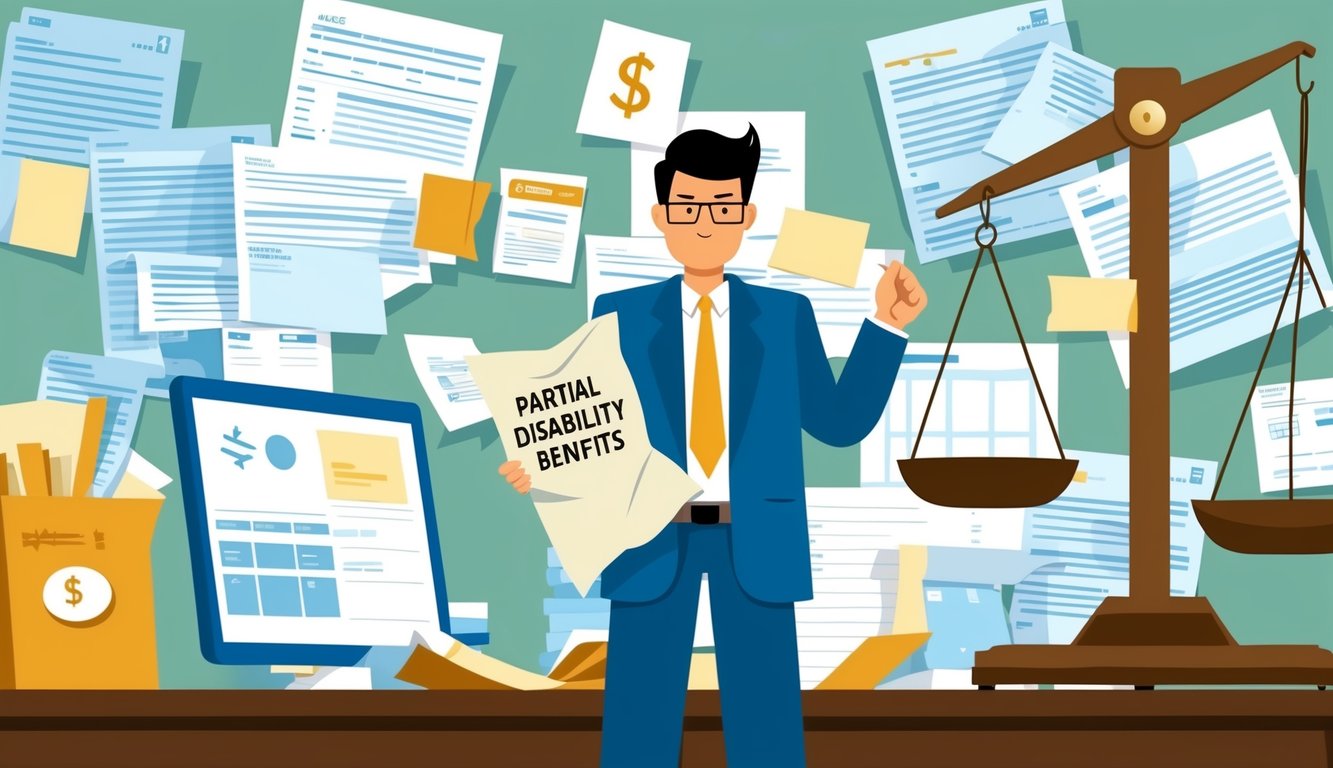
When selecting disability insurance, many people focus solely on total disability coverage.
This oversight can leave you financially vulnerable if you experience a partial disability.
Partial disability benefits provide coverage if you can still work but with reduced hours or capacity.
These benefits typically pay a portion of your lost income due to the disability.
Residual disability benefits can help bridge the gap between your pre-disability and current earnings.
They’re especially valuable for professionals whose income is closely tied to their ability to perform specific tasks.
Some policies require a minimum income loss, often 15 to 20%, to qualify for partial disability benefits.
Be sure to review these thresholds when comparing policies.
Newer policies may define partial disability in terms of reduced hours or the inability to perform a certain percentage of your job duties.
This can provide more flexible coverage options.
Partial disability can encompass various situations, such as being unable to perform some pre-injury tasks or earning less due to your condition.
Understanding these nuances is crucial when evaluating policies.
By including partial disability coverage in your insurance plan, you protect yourself against a broader range of potential scenarios.
This comprehensive approach can provide greater financial security and peace of mind.
7) Skipping a Financial Professional’s Advice
Choosing disability insurance can be complex, and many people make the mistake of not consulting a financial professional.
This decision can lead to inadequate coverage or overpaying for unnecessary benefits.
Financial advisors have expertise in assessing your specific needs and financial situation.
They can help you determine the right amount of coverage and evaluate different policy options.
Credentials are important when selecting a financial advisor.
Look for professionals with relevant licenses and certifications, such as Certified Financial Planner (CFP) designation.
A qualified advisor can explain the nuances of disability insurance policies, including elimination periods, benefit amounts, and riders.
They can also help you understand how disability insurance fits into your overall financial plan.
Don’t assume that your employer-provided coverage is sufficient.
A financial professional can review your existing benefits and identify any gaps in coverage that need to be addressed.
Remember that your insurance needs may change over time.
A financial advisor can help you reassess your coverage periodically and make adjustments as necessary.
While it may seem cost-effective to skip professional advice, the long-term benefits often outweigh the upfront cost.
A well-chosen disability insurance policy can provide crucial financial protection if you’re unable to work due to illness or injury.
Understanding Disability Insurance
Disability insurance provides financial protection if you become unable to work due to injury or illness.
It replaces a portion of your income, helping maintain your lifestyle and cover expenses during recovery.
Definition and Purpose
Disability insurance is a contract between you and an insurance company.
It pays a monthly benefit if you can’t work due to a qualifying disability.
Its purpose is to protect your income and financial stability.
The policy typically replaces 60% to 70% of your base salary for long-term disabilities.
The main goal is to help you meet financial obligations like mortgage payments, bills, and living expenses while you’re unable to earn an income.
This coverage offers peace of mind, ensuring you don’t deplete savings or struggle financially during a challenging time.
Types of Disability Insurance
There are two primary types of disability insurance: short-term and long-term.
Short-term disability insurance:
- Typically covers 3-6 months
- Often provided by employers
- Replaces a higher percentage of income
- Has a shorter waiting period before benefits start
Long-term disability insurance:
- Covers extended periods, sometimes until retirement
- Can be employer-provided or purchased individually
- Replaces 40% to 60% of base salary
- Has a longer waiting period, usually 90 days
When choosing disability insurance, consider factors like benefit amount, benefit period, and any additional riders that can enhance your coverage. Comparing multiple options is crucial to find the policy that best fits your needs and circumstances.
Assessing Your Coverage Needs

Determining the right amount of disability insurance requires careful evaluation of your financial situation.
Two key factors to consider are your current income and expenses.
Evaluating Your Income
Start by calculating your monthly take-home pay.
Include all sources of income, such as your salary, bonuses, and investment returns.
Consider potential future earnings as well, especially if you expect significant career advancements.
Factor in any employer-provided disability coverage.
Many companies offer short-term disability insurance, but this may not be sufficient for your needs. Review your existing policies to identify any gaps in coverage.
Think about how long you could manage without a paycheck.
Aim for a policy that replaces 60-80% of your income.
This percentage usually provides adequate protection without being prohibitively expensive.
Considering Your Expenses
List all your monthly expenses, including:
- Mortgage or rent payments
- Utilities
- Groceries
- Transportation costs
- Debt repayments
- Healthcare expenses
Don’t forget to account for potential future expenses, such as childcare costs or home renovations. Consider any business-related expenses if you’re self-employed.
Review your emergency fund.
A robust savings cushion might allow you to opt for a longer elimination period, potentially lowering your premiums.
Evaluate your lifestyle needs.
Would you need to maintain your current standard of living, or could you cut back on certain expenses if disabled?
Policy Features to Consider
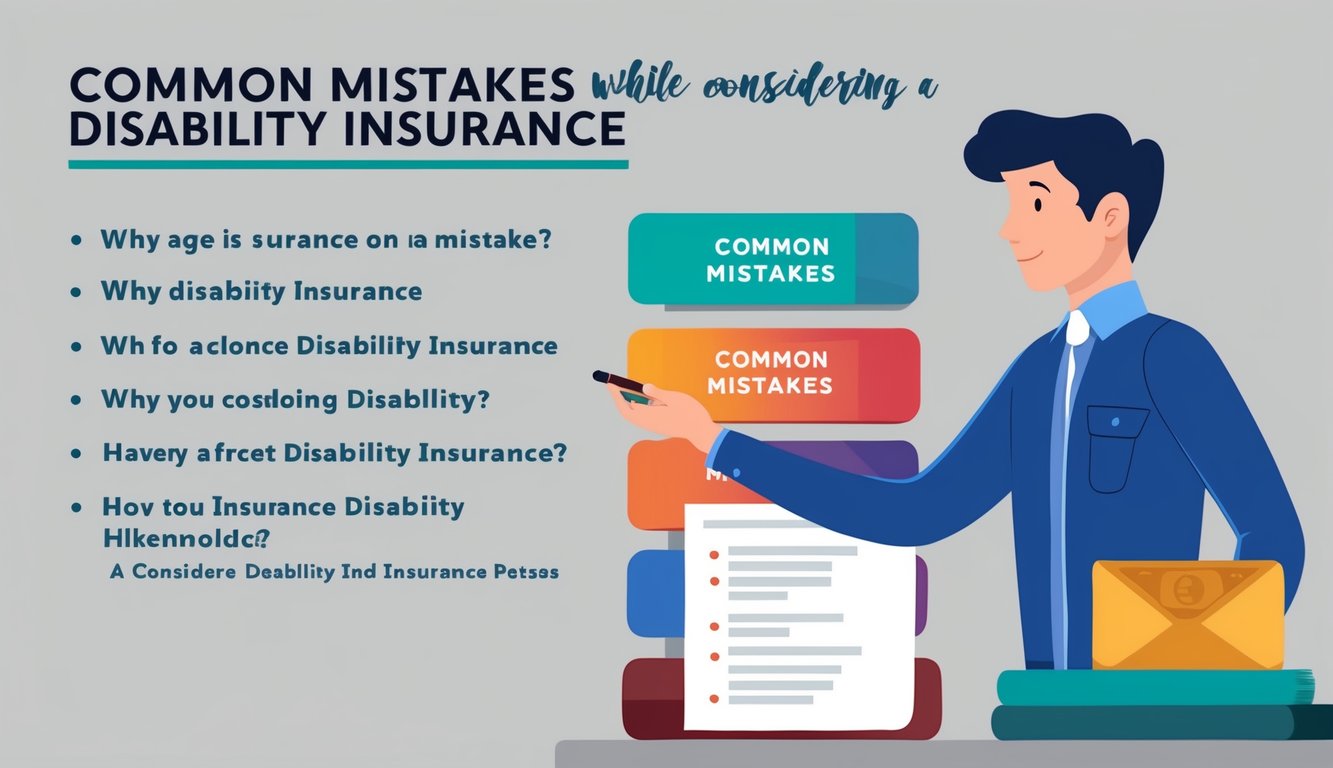
Carefully evaluating key policy features ensures you select disability insurance that meets your specific needs.
Pay close attention to the elimination period, benefit period, and coverage amount when comparing policies.
Elimination Period
The elimination period is the waiting time between when you become disabled and when your benefits start.
Shorter elimination periods typically result in higher premiums, while longer periods reduce costs.
Common elimination periods range from 30 to 180 days.
Consider your savings and how long you could manage without income.
A 90-day elimination period often balances affordability with protection.
If you have substantial emergency savings, you might opt for a longer elimination period to lower your premiums.
However, ensure you can comfortably cover expenses during this time.
Benefit Period
The benefit period determines how long you’ll receive payments if you become disabled.
Options typically include 2 years, 5 years, 10 years, or until retirement age.
Longer benefit periods offer more protection but come with higher premiums.
Consider your age, career plans, and financial obligations when choosing.
For younger professionals, a benefit period lasting until retirement age provides maximum protection.
Mid-career individuals might find a 10-year benefit period sufficient.
Remember, most disabilities last under three years.
Balance the cost of extended coverage against the potential risk of a long-term disability.
Coverage Amount
Your coverage amount is the monthly benefit you’ll receive if disabled.
Most policies replace 60-70% of your pre-disability income.
To determine your ideal coverage, calculate your essential monthly expenses.
Include mortgage/rent, utilities, food, healthcare, and debt payments.
Consider any other income sources, such as investments or a spouse’s salary.
You should also factor in potential changes to your lifestyle during disability.
Some policies offer riders to increase coverage over time, protecting against inflation.
These can be valuable for maintaining your purchasing power long-term.


